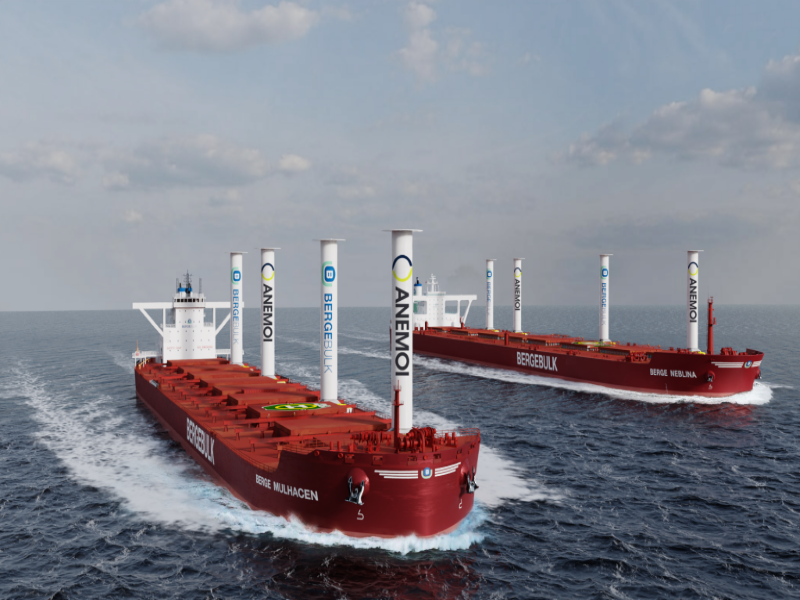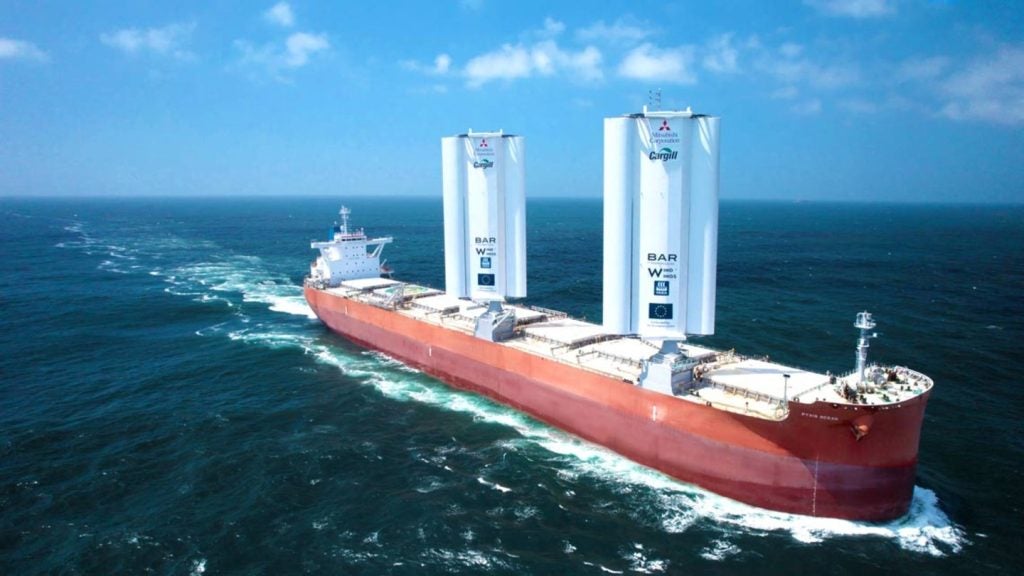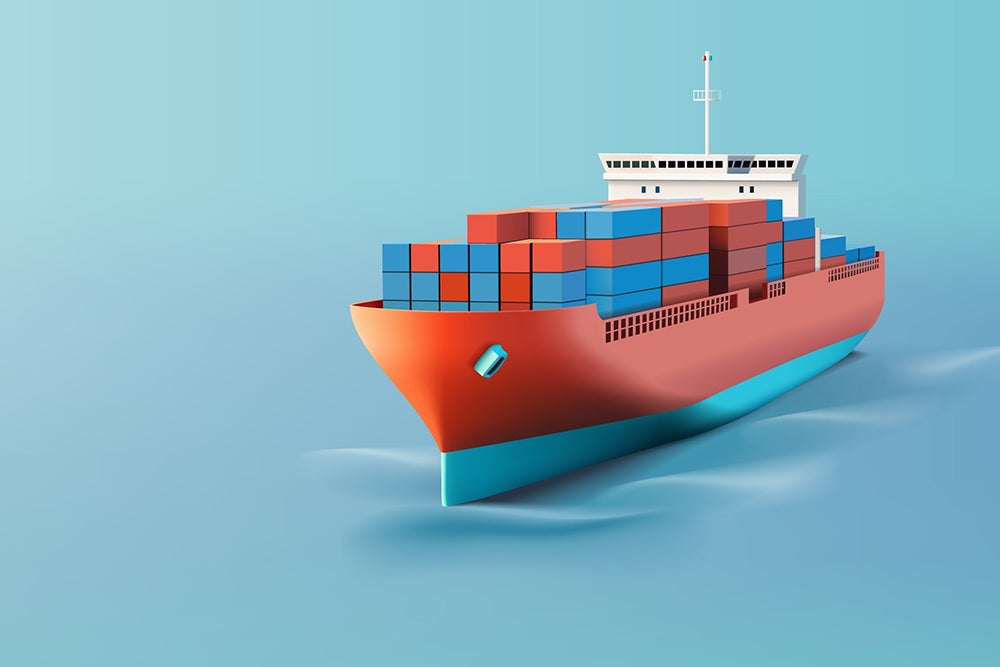With maritime activities accounting for around 3% of global emissions, a growing number of shipping operators are looking to greener fuel alternatives, such as liquefied natural gas (LNG) and hydrogen, as a route to decarbonisation. However, alongside the transition from marine diesel to cleaner power sources requiring costly infrastructure and ship adaptations, an interim solution is needed. Could hybrid propulsion systems be the answer?
In recent years, dual fuel technologies have emerged as a quick-fix solution when it comes to reducing the marine industry’s significant carbon footprint.

Whilst not technically a hybrid system, these technologies typically comprise a traditional diesel engine that can either run on LNG or conventional liquid marine fuels such as diesel oil. Diesel-electric hybrid propulsion systems include diesel engines combined with battery-powered electric propulsion.
Due to limited space onboard container ships, where much of the capacity is given to cargo, battery-powered propulsion systems are more suitable for transporting ships in and out of ports, rather than powering them over longer distances.

Hybrid solutions have some obvious advantages – their battery-assisted systems enable shipping companies to comply with strict environmental regulations when their vessels enter certain ports, allowing them to switch from traditional power sources several miles offshore. Dual fuel technologies are already regarded as a valuable sustainability stopgap, whilst improvements to the efficiency and performance of greener fuel alternatives continue.
The potential in hydrogen fuel
Hydrogen holds potential as one of the cleanest energy resources when produced from renewable sources, but its low energy density means container ships would need to carry a lot of it, at high pressure, for it to be effective as a power source.
How well do you really know your competitors?
Access the most comprehensive Company Profiles on the market, powered by GlobalData. Save hours of research. Gain competitive edge.

Thank you!
Your download email will arrive shortly
Not ready to buy yet? Download a free sample
We are confident about the unique quality of our Company Profiles. However, we want you to make the most beneficial decision for your business, so we offer a free sample that you can download by submitting the below form
By GlobalDataThere are also clear risks attached to hydrogen due to its flammability, and its use is not yet regulated at an international level, although the International Maritime Organisation (IMO) has indicated that regulations could be introduced in 2025. There are also issues with how hydrogen is produced. Whilst hydrogen burns cleanly, its generation from a coal power station, for example, does not reduce emissions; it simply changes where the emissions derive from.
Most ports do not have the facilities to enable hydrogen-powered vessels to refuel.
White hydrogen, which is naturally occurring, red hydrogen, produced using nuclear power, and green hydrogen, produced using renewable energy, are more sustainable as fuel sources, but they would require significant investment in infrastructure to be viable on an international scale. To operate on hydrogen power, vessels would need to be modified or redesigned and currently, most ports do not have the facilities to enable hydrogen-powered vessels to refuel.
Norway has been one of the first nations to back the development of hydrogen infrastructure, having awarded six shipping companies the equivalent of nearly £90m to build 15 hydrogen and ammonia-powered ships.
If the transition to sustainable maritime fuels is to become adopted globally, greater coordination between nations will be needed to establish universal infrastructure for shipping companies to use at ports around the world. Inevitably, this will take time.
Patented hybrid propulsion solutions
As an interim solution on the shipping industry’s route to decarbonisation, hybrid propulsion systems have become a key area of focus for innovators. Some of the innovations in this space have focused on wind-assisted technologies where ships run conventional propulsion systems, such as marine diesel, but are retrofitted with sails to reduce power demand on the engine.
Wind-assisted solutions have a small environmental cost and require few modifications to vessels or port infrastructure. Research has shown that up to 28% of emissions generated on simulated journeys between New York and Amsterdam could be saved where wind propulsion is used.

Among the current wind-assisted innovations is a patent (GB2602033B) held by global wind technology firm, Anemoi Marine Technologies, for a method of manufacturing rotor sails.
The method requires glass fibres (known as first fibres) to be wrapped around a mantel into a tubular skin to form the rotor tube. Glass or carbon fibres (known as second fibres) are then developed into strips that can be attached to the tubular skin, which extends along the axis of the rotor body.
When implemented, the tubular rotor body, which forms part of the rotor sail, is turned and then propelled forward by the wind, and due to its slim, vertical structure, does not interfere with loading and unloading.

UK-based marine engineering firm, BAR Technologies, holds a patent (EP4069581B1) for an innovative high-lift rigid wing system comprising three vertical elements.
Dubbed ’WindWings’, the apparatus changes shape or orientation depending on the wind conditions for maximum thrust and can be folded down to the deck for security.
The wings work in tandem with the ship’s engine, either reducing the power required from the engine or in the right conditions allowing it to be powered down so that the vessel travels at the same speed as a conventional bulk carrier whilst using less fuel.
Considerations for innovators
Whilst several patented technologies targeting hydrogen propulsion systems already exist, this should not stop innovators from investing in parallel or adjacent areas.
Innovators do not have to reinvent the wheel and there is scope for existing technologies to be refined and developed further. It’s also important for innovators to consider the compatibility of new and existing technologies, and the role retrofitting could play in supporting this.
Hybrid propulsion systems could provide a viable and worthwhile stepping stone on the way to net zero.
When seeking to enforce their patent rights, innovators must consider maritime law and seek specialist advice. Enforcing patents in international waters can be challenging, but there can be benefits if patents are secured in certain locations, so it’s important to consider where ships are registered and built and the implications this could have on future IP rights.
Achieving decarbonisation is going to be incredibly challenging for the global shipping industry, but hybrid propulsion systems could provide a viable and worthwhile stepping stone on the way to net zero.
Only time will tell if these technologies can bring benefits in the longer term too.





Related Company Profiles
Cargill Inc